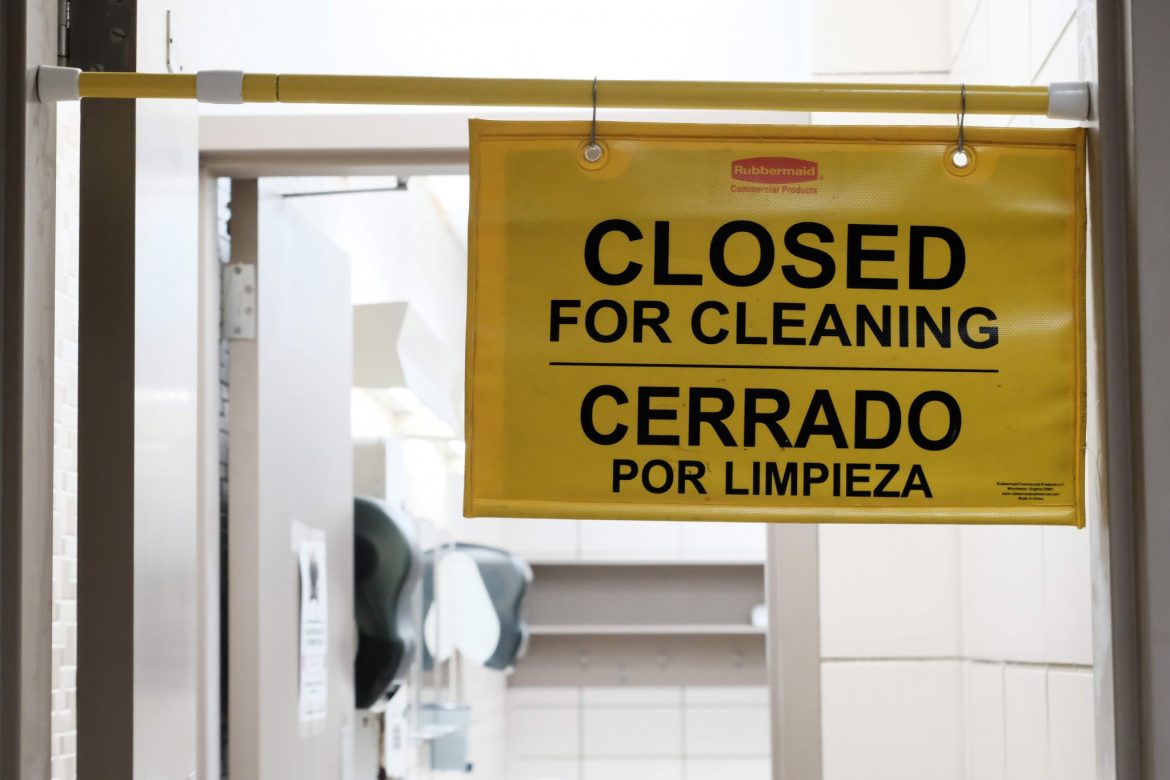COVID-19 brought new guidance and parameters for cleaning and safety measures in universities and colleges across the country. Despite multiple assurances from the Harding University administration to faculty and students that classrooms would be cleaned daily, evidence suggests that these guidelines are not being followed.
In an investigation conducted by this journalist, a random sampling of nine classrooms from the Ezell Building, Donald W. Reynolds Center for Music and Communication, and Pryor-England Center for Science and Engineering were tested for regular cleaning procedures by leaving eraser shavings and marks on desks. Twenty-four hours later, all but one of the classrooms in the Ezell Building remained the same. Even after the weekend, the classrooms remained unchanged.
The health and safety section of the COVID-19 information on Harding’s website states, “Aramark Facility Services will provide thorough ongoing cleaning throughout all facilities, including classrooms, following a top to bottom cleaning approach, using EPA-registered hospital disinfectants, and focusing on high-touch surfaces.”
Both the Centers for Disease Control (CDC) and the Arkansas Department of Health (ADH) offer guidance to universities regarding cleaning and disinfecting. In a guidance issued March 27, the ADH wrote that high-touch surfaces, including tables and desks, should be cleaned and disinfected frequently. Coronaviruses on surfaces and objects naturally die within hours to days, according to the CDC, but research by the National Institute of Health has not shown conclusively how long COVID-19 remains infectious on any given surface. Guidance from the CDC regarding the coronavirus is subject to change following revelations, and Dr. David Collins, executive vice president of Harding and a member of the COVID-19 task force, said Harding used a similar strategy with setting and adapting their parameters.
“We try to look at things where we need to either tighten up a little bit, do a better job,” Collins said. “Or even where we are probably overextending and need to lessen up just a little bit where, where our expectations were probably too great for the intended outcome.”
Chief Financial Officer Tammy Hall, who works directly with Aramark Services, said the University gave all staff additional training, added an Electrostatic Sprayer System that was used daily to sanitize larger spaces, extended safety training to the team, increased cleaning in assigned areas and purchased $40,000 of equipment. Classrooms were supposed to be cleaned — vacuumed, wiped down and trash emptied — during daily cleaning shifts, Monday through Friday.
Hall said that Greg Maples, the Aramark facility director at Harding, told her that two married employees were in quarantine and isolation after one tested positive with coronavirus. When they only had around 50 employees and two were sick, Hall said, the other employees were spread thin trying to meet the heightened requirements. This was corroborated by multiple Aramark cleaning service employees.
“We staff and prepare well in advance to try and offset issues like we are all facing in this pandemic,” Maples said in response to a query as to whether staff on the cleaning service were stretched thin.“The pandemic has been a challenge, but it has improved our team work across the campus with my team and Harding University.”
When asked via email for an explanation about the results of this investigation, Maples wrote, “Aramark is committed to providing the highest levels of service at all times. If an issue is brought to our attention we work to address it on the spot. Please share additional information on these locations and we will address it immediately. Aramark provides the best in class resources from across the global community. Proprietary training systems and tools are used daily and 100% of our teams have been trained in these processes.”
Zachary Neal, dean of students, said the Office of Student Life was conducting contact tracing via a holistic approach by asking students a series of questions to determine when and where students may have been close contacts with others. Results did not appear linked to specific locations, he said.
“The close contacts are not consistently isolated to specific locations,” Neal said. “The strongest observation related to close contacts is from students traveling together, eating in groups and spending time together in close-proximity, casual settings.”
